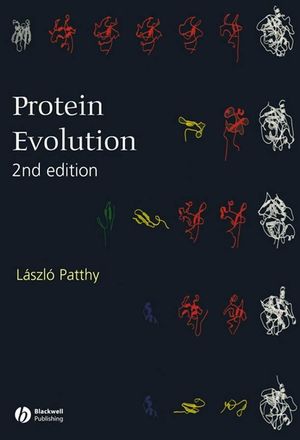Protein Evolution, 2nd EditionISBN: 978-1-4051-5166-5
Paperback
392 pages
November 2007, Wiley-Blackwell
 |
||||||
Preface to the second edition.
Acknowledgments.
Introduction.
1. Protein-Coding Genes.
1.1 Structure of protein-coding genes.
1.2 Transcription.
1.3 Translation.
References.
Useful internet resources.
2. Protein Structure.
2.1 The polypeptide backbone.
2.2 The amino acids.
2.3 Covalent modifications of amino acid side chains.
2.4 Interactions that govern protein folding and stability.
2.5 Secondary structural elements.
2.6 Supersecondary structures.
2.7 Tertiary structures of proteins.
2.8 Multidomain proteins.
2.9 Multisubunit proteins.
References.
Useful internet resources.
3. Mutations.
3.1 Types of mutations.
3.2 Factors affecting rates of mutation.
3.3 The fate of mutations.
3.4 The molecular clock.
References.
Useful internet resources.
4. Evolution of Protein-Coding Genes.
4.1 Alignment of nucleotide and amino acid sequences.
4.2 Estimating the number of nucleotide substitutions.
4.3 Rates and patterns of nucleotide substitution.
4.4 Variation in substitution rates.
4.5 Molecular phylogeny.
References.
Useful internet resources.
5. Evolution of Orthologous Proteins.
5.1 Orthologous proteins with the same function in different species.
5.2 Orthologous proteins with modified function in different species.
5.3 Orthologous proteins with major modification of function.
5.4 Orthologous proteins that have lost their function.
5.5 Orthologous proteins that have gained additional functions.
5.6 Prediction of the function of orthologous proteins.
5.7 The three-dimensional structure of orthologous proteins.
5.8 Detecting sequence homology of protein-coding genes.
References.
Useful internet resources.
6. Formation of Novel Protein-Coding Genes.
6.1 De novo formation of novel protein-coding genes.
6.2 Gene duplications.
References.
Useful internet resources.
7. Evolution of Paralogous Proteins.
7.1 Advantageous duplications.
7.2 Neutral duplications.
7.3 Similarities and differences in the evolution of paralogous and orthologous proteins.
7.4 Predicting the function of proteins by homology.
7.5 Detecting distant homology of protein-coding genes.
References.
Useful internet resources.
8. Protein Evolution by Assembly from Modules.
8.1 Modular assembly by intronic recombination.
8.2 Modular assembly by exonic recombination.
References.
Useful internet resources.
9. Genome Evolution and Protein Evolution.
9.1 Evolution of genome size.
9.2 The role and survival of nongenic DNA.
9.3 Repetitiveness of genomic DNA.
9.4 Mechanisms responsible for increases in genome size.
9.5 Compositional organization of eukaryotic genomes.
9.6 Genomes of model organisms.
9.7 The genome of the cenancestor.
9.8 Changes in gene number and gene density in different evolutionary lineages.
9.9 Proteome evolution.
References.
Useful internet resources.
Glossary.
Index



